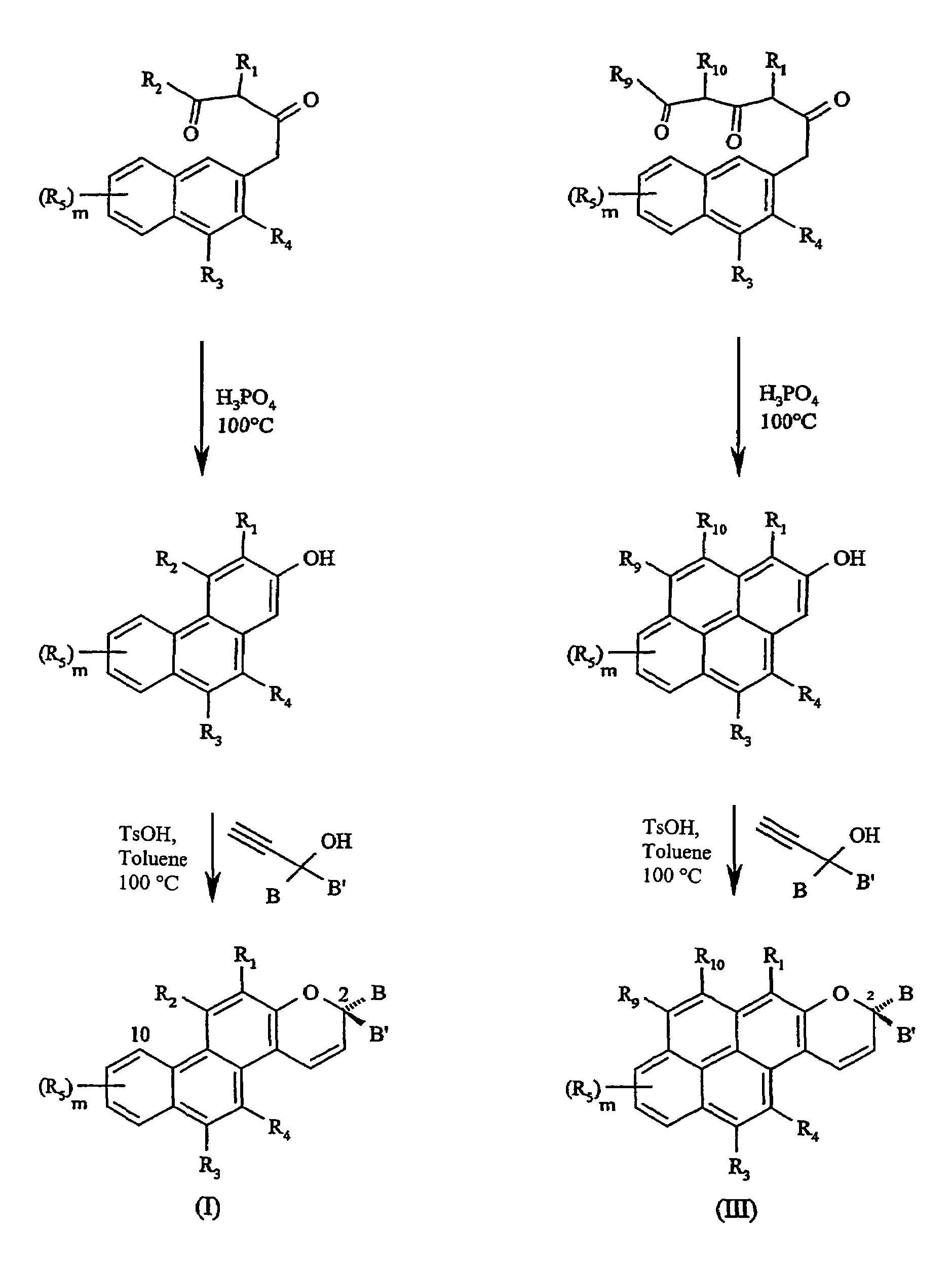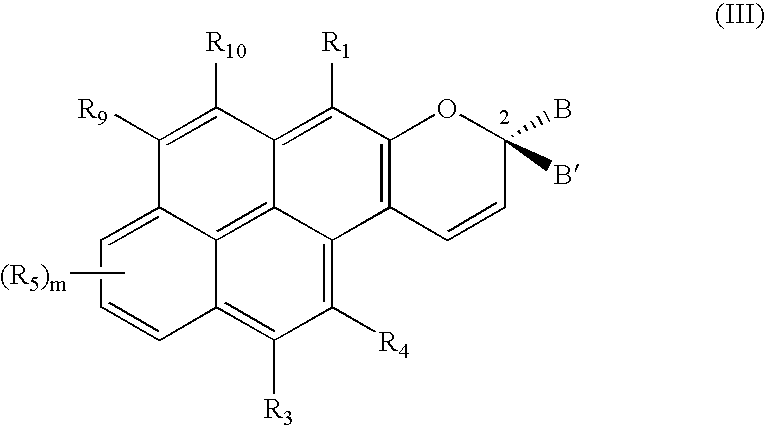Substituted phenanthropyrans
a technology of phenanthropyrans and substituted phenanthropyrans, which is applied in the field of photochromic compounds, can solve the problems of dyes that have an excessively high temperature sensitivity with respect, dyes that have been known in the prior art, and often have inadequate long-wave absorption in the excited and unexcited state, and achieve good kinetic and durability properties, long-wave absorption, and high darkening performan
- Summary
- Abstract
- Description
- Claims
- Application Information
AI Technical Summary
Benefits of technology
Problems solved by technology
Method used
Image
Examples
Embodiment Construction
[0030]In one embodiment of the present invention, the groups R1, R3, R4 and R5, independently of one another, are selected from hydrogen, a substituent from the group α or an —NR6R7 group as defined above.
[0031]In a further embodiment of the present invention, at least one of the B and B′ groups is a phenyl group substituted in the para position with an —NR6R7 group as defined above. In this connection, the R6 and R7 groups, together with the nitrogen atom of this —NR6R7 group, may also form an azaadamantyl group. Alternatively, they may also form a 3-membered to 10-membered nitrogen heterocyclic ring as already defined above, especially a morpholine group, a thiomorpholine group, a piperidine group, an azacycloheptane group, an azacyclooctane group, a 1,4-diaza-1-methyl-cycloheptane group, a piperazine group, an —N-(N—-(C1–C6-alkyl)piperazine group or a pyrrolidone group, or the phenyl group substituted in the para position with an —NR6R7 group, represents, as a whole, an N-methyl-...
PUM
| Property | Measurement | Unit |
|---|---|---|
| wavelength absorption maximum | aaaaa | aaaaa |
| photochromic | aaaaa | aaaaa |
| wavelengths | aaaaa | aaaaa |
Abstract
Description
Claims
Application Information
 Login to View More
Login to View More - R&D
- Intellectual Property
- Life Sciences
- Materials
- Tech Scout
- Unparalleled Data Quality
- Higher Quality Content
- 60% Fewer Hallucinations
Browse by: Latest US Patents, China's latest patents, Technical Efficacy Thesaurus, Application Domain, Technology Topic, Popular Technical Reports.
© 2025 PatSnap. All rights reserved.Legal|Privacy policy|Modern Slavery Act Transparency Statement|Sitemap|About US| Contact US: help@patsnap.com



